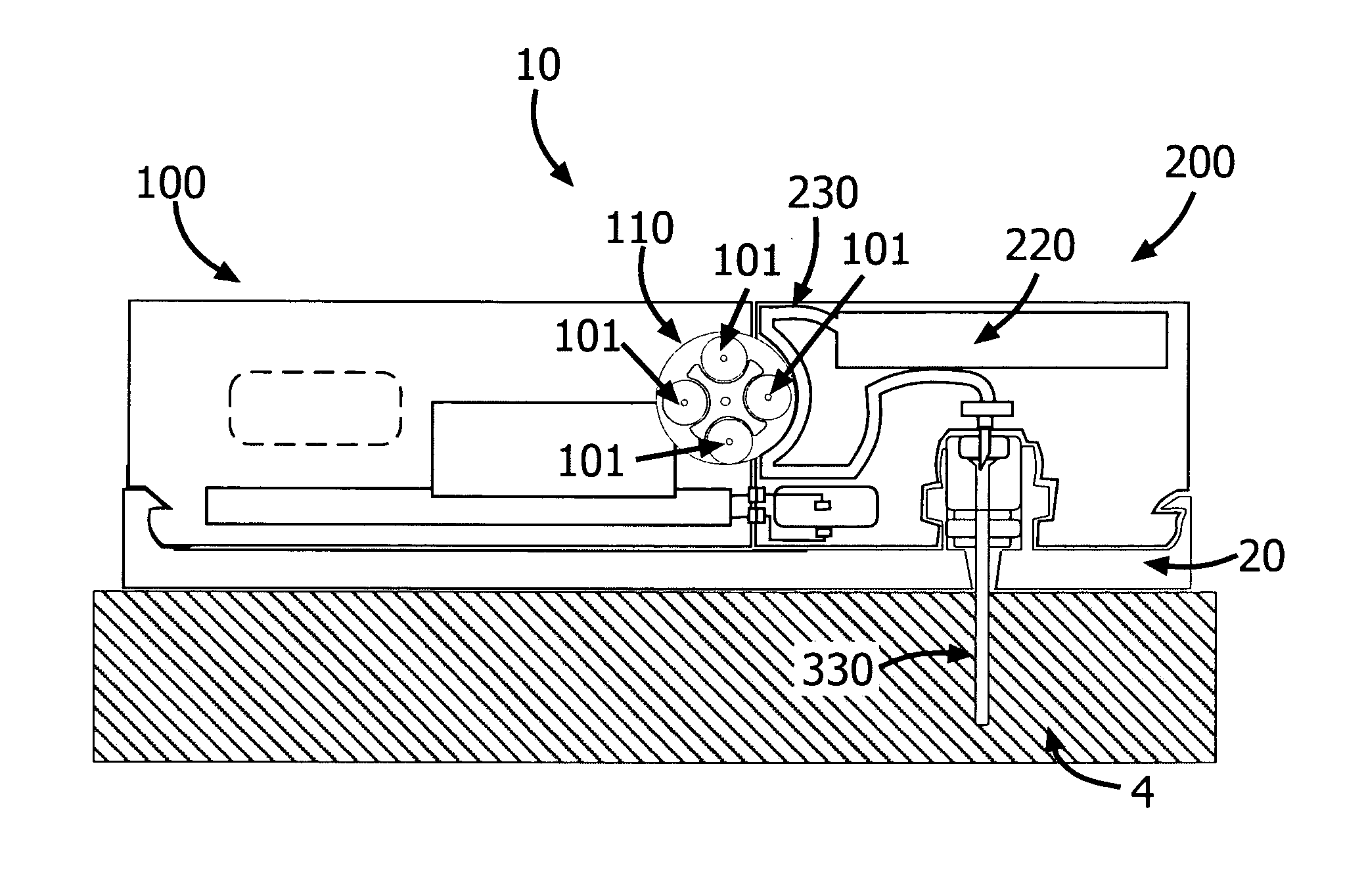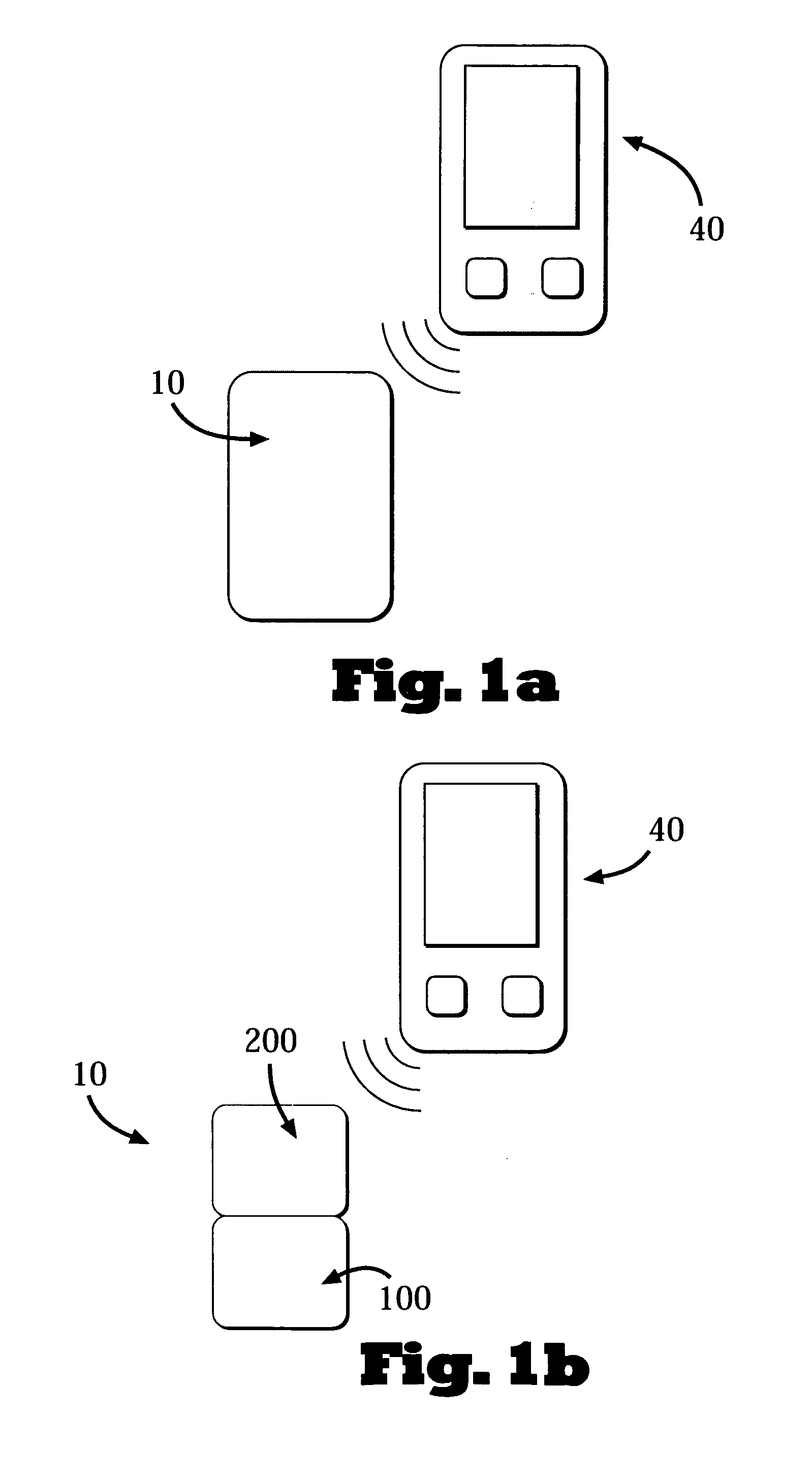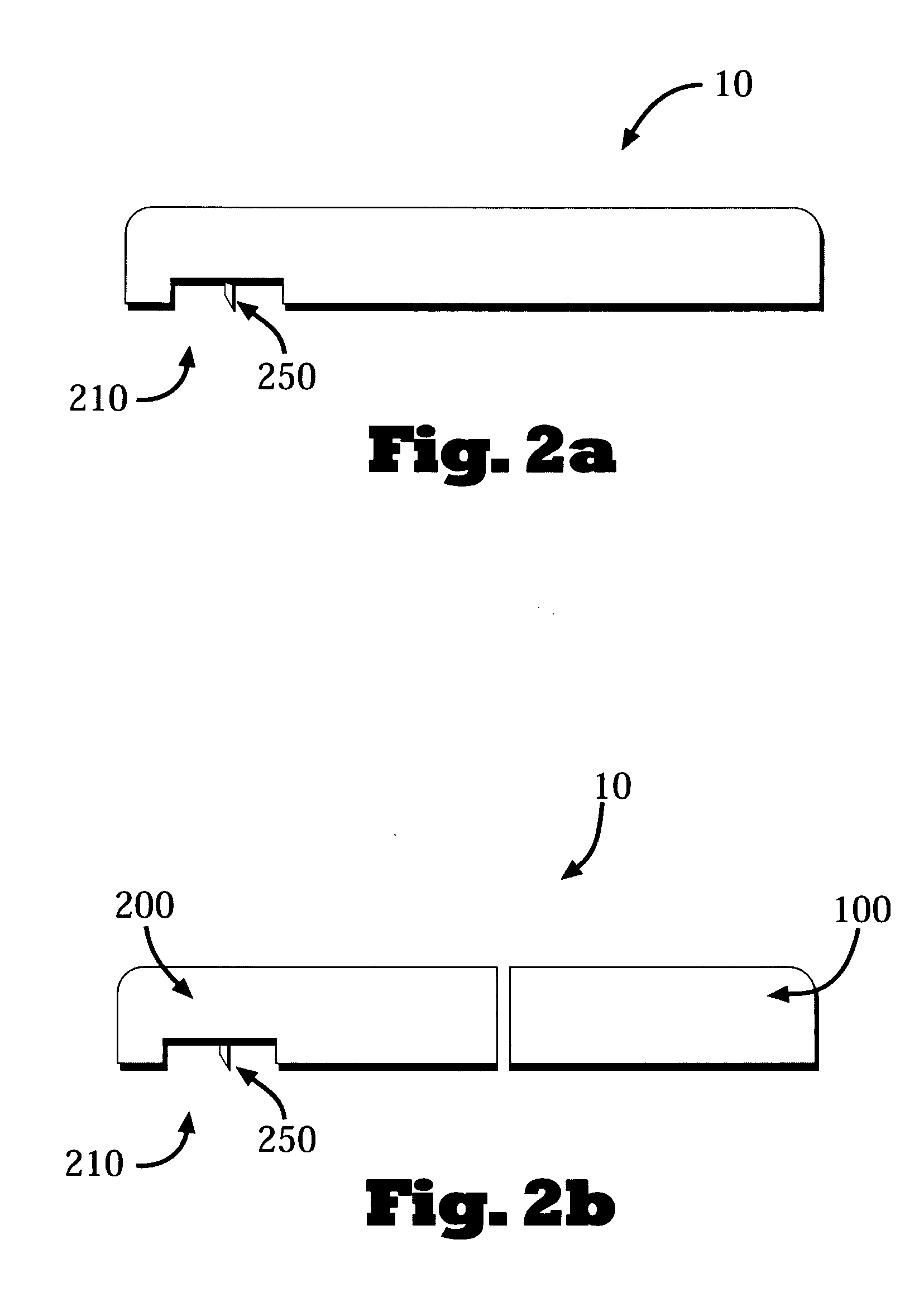Both basal and bolus volumes generally have to be delivered in precise doses, according to an individual prescription, since an overdose or under-
dose of
insulin could be fatal.
Although bulky, large, and heavy, these
first generation devices were an improvement over multiple daily injections.
Nevertheless, the
first generation devices were uncomfortable, bulky devices with long tubes.
Consequently, these
first generation devices were rejected by the majority of diabetic
insulin users because the devices impacted regular activities, such as sports (e.g., swimming).
The second generation
skin securable infusion devices are typically heavy and bulky and generally cause discomfort when carried by the user.
Additionally, these devices are relatively expensive.
Furthermore, although there are situations in which patients would like to temporarily disconnect the pump (e.g., when taking hot showers, entering a sauna, etc.), these second-generation devices cannot be reconnected after being disconnected.
Unlike second generation infusion pumps, in situations involving site misplacement of the cannula (resulting in scarred tissue, bleeding, cannula kinking etc.), only the cradle and cannula may have to be disposed and replaced, rather than the whole (and relatively expensive) device which includes the reservoir still containing unused insulin.
Transmitting the data between a dispensing device and a
remote control (also referred to as a
remote control unit and / or remote controller, together with the dispensing device may also be referred to as a dispensing
system; each also may be individually referred to as a unit, where a device may comprise one or more units) give rise to certain problems.
First, the transmission between a
remote control and a dispensing device may be corrupted or disrupted, e.g., the
signal may be corrupted due to low
signal to
noise ratio (SNR).
Another drawback is that there are only a limited number of frequencies open for transmissions, e.g., the frequencies in the Industrial, Scientific, and Medical (ISM) radio band.
Furthermore, there are additional devices, such as
microwave ovens, switches, and electric motors that cause
radio frequency interference (RFI) in the ISM radio band.
As wireless and
miniaturization technologies improve,
electrical devices' reliance on wireless as a mechanism for communications will continue to rise, thus exacerbating interference problems (e.g., causing jamming and
noise problems).
The multiplicity of communications and messages sharing similar (or the same) frequencies may also give rise to problems related to receiving false messages, jamming, low
signal to
noise ratio, high
radio frequency interference and the like.
Communications problems and
programming of infusion pumps may be particularly critical with respect to implantable devices.
Such an implementation issue has to be considered with respect to both second and
third generation dispensing devices.
Including two communication mechanisms in the same unit may result in bigger and bulkier housing and in higher costs.
During performance of
pairing procedures to match devices that include wirelessly communicating units, other devices may interfere, resulting in mismatched paired devices, e.g., a remote control of one user may be paired to a dispensing unit of another user.
This risk of communication mismatch increases in environments in which multiple devices communicate in close proximity of each other (e.g., in crowded areas, such as malls, theaters, etc.).
Communication problems, such as high RFI level, multiple devices that use the same frequencies and implement similar transmission techniques, may occur.
Thus, fewer transmissions will share the same frequencies, resulting in decreased RFI level and other communication-related interferences.
 Login to View More
Login to View More  Login to View More
Login to View More 


